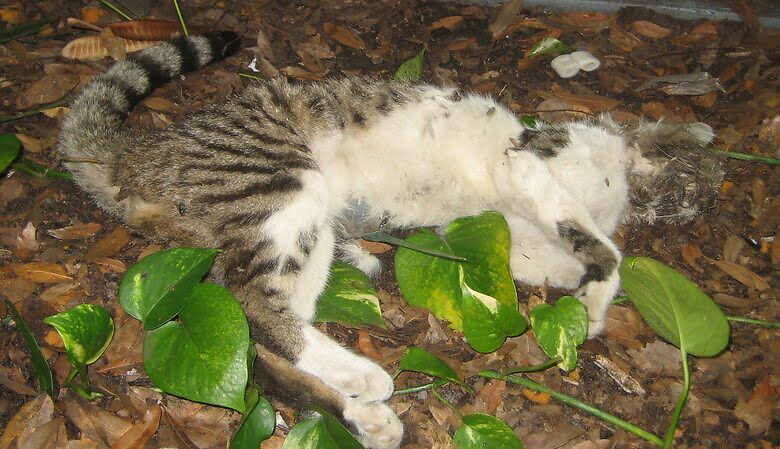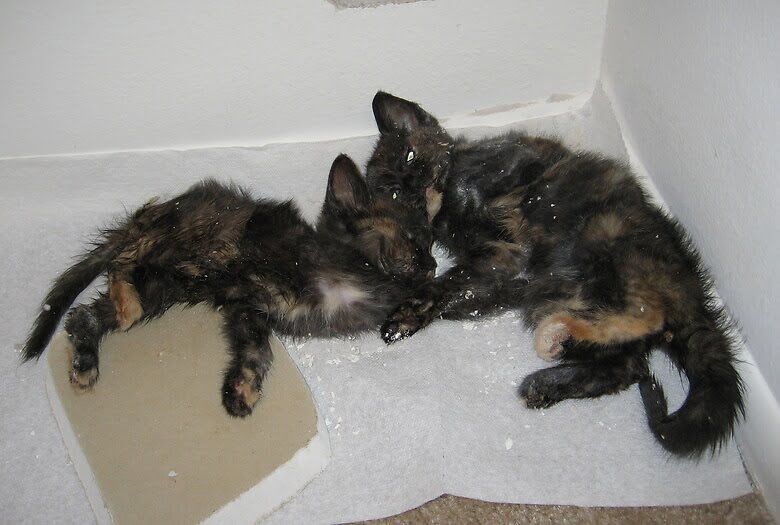Generally speaking, you need to dispose of a deceased animal within 24 hours of death. Methods of disposal that the law tends to accept are burning, composting, burial, or rendering. You may also contact your local landfill to see if they have recommendations.

Veterinarian Assistance
If you have a pet that will be euthanized, your veterinarian can help you with proper disposal of the remains. Depending on where you live, they may offer cremation or for you to take the pet back home with you. Many vets offer services that provide a private cremation and a memorable keepsake for a fee. Often, they will also offer a communal cremation at a reduced fee with a sampling of the ashes for you to keep.
Should you decide to take your pet home and dispose of the remains you will need to check local laws to make sure you aren’t going to break any of them with a home burial or home cremation. Should you decide to do a home burial, you need to select a good spot that will not be disturbed for the foreseeable future.
Common Disposal Options to Consider for Your Pet
Landfill Disposal
Many landfills permit the disposal of most animal remains. You can contact your local landfill to learn any necessary details for disposal of natural carcasses or euthanized animals. When you arrive, be sure to notify them you are disposing of an animal that was euthanized. They require specific handling to keep wildlife from accidentally being exposed to the poison.
Disposal by Burial
Many people prefer to bury their dead pets right on their property. Some areas will allow burial of certain animals on your own land if the following requirements are met:
- Make sure ground water is a minimum of 10 feet below surface.
- Receive landowner’s permission.
- Cover remains with lime to control odors.
- Place a minimum of two feet of soil over remains immediately.
- Check with authorities to be sure you can bury the animal.
- Check that the burial is 100 feet away from any body of water such as a lake, stream, or well.
Incineration or Cremation
You also have the option of cremating or incinerating the animal remains and dispose of in a landfill that permits it. Some will keep in an urn but need to be done professionally.
Hiring a Service
As mentioned, there is also the option to hire a service to dispose of your pet for you. There are a variety of options available. Some will just take your pet and dispose of it in some manner that is legal in your area, for a fee. This is ideal for those who are not emotionally attached to the dead pet’s body and do not want to deal with it.
If you are more emotionally attached, then look for one of the services that collects your pet and cremates it. They will usually come to your house or to the vet to pick up the pet for you and deliver the ashes to your home. You can even have the ashes turned into jewelry in some cases.

Infectious Disease in Livestock
Your State Veterinarian must be sought if you suspect your livestock has passed from a contagious or infectious disease. Disposal must be done according to the authorization and guidelines of your state vet.
If it is wildlife you suspect having passed from a disease, please contact your State Department of Fish and Game. They will be able to help you properly dispose of the remains.
Dead Bird Disposal
If multiple birds are found dead and there is no obvious cause, such as a building or power line, you should contact your state’s sick and dead bird hotline. If you have domestic birds that have died of unknown illnesses, you should contact your local veterinarian. They can help diagnose if it is a concern or not, and tell you how to properly proceed with disposing of the remains.
General Safety Precautions
- Don’t touch dead wildlife with your bare hands.
- Use a shovel and/or protective, disposable gloves when handling dead wildlife. If you do not have gloves on hand, in a pinch you can use plastic bags or a Ziploc to cover your hands.
- Turn bags or gloves inside out as you remove them to avoid contamination.
- Seal contaminated bags or gloves up in a clean plastic bag and dispose of them in another household trash bag. All contaminated items should be double bagged at a minimum.
- After handling the remains, wash your hands thoroughly with soap.
- Disinfect any objects or surfaces that came into contact with the carcass.
- Wash any clothing that may have touched the carcass immediately.
Options for Disposal
- Place carcass in bag, seal the bag up.
- Place bag with carcass in it into a second plastic bag.
- Throw this double bagged remains away with household garbage.
- Bury the carcass.
